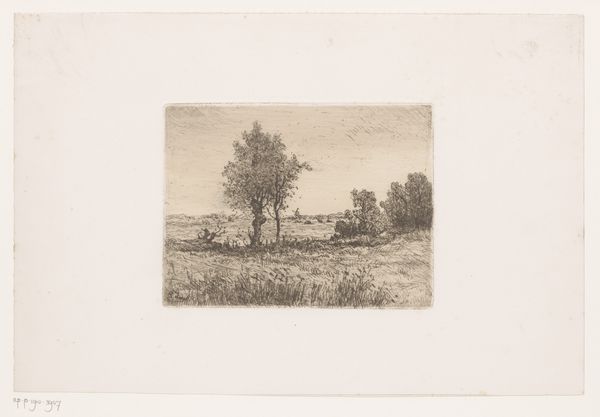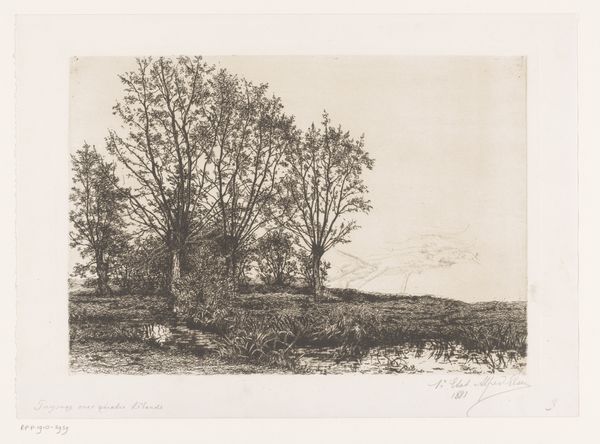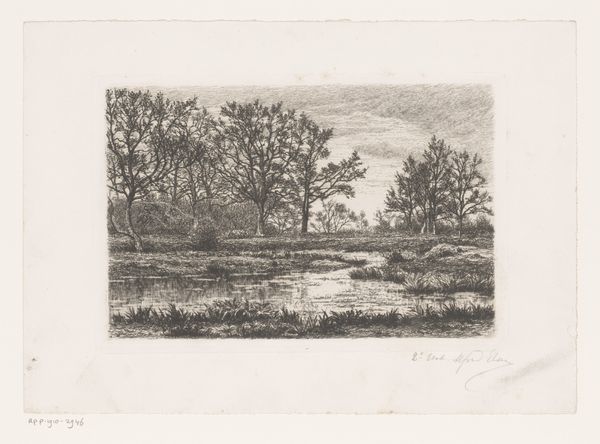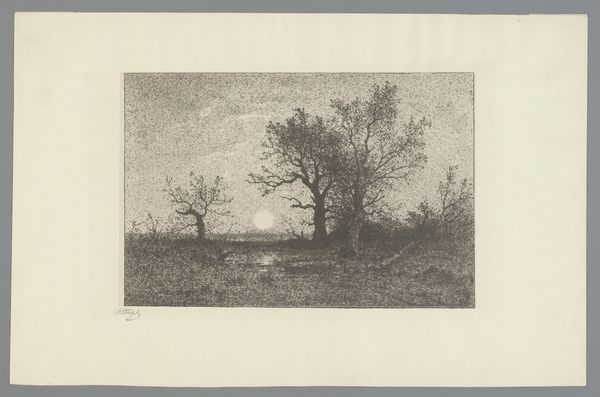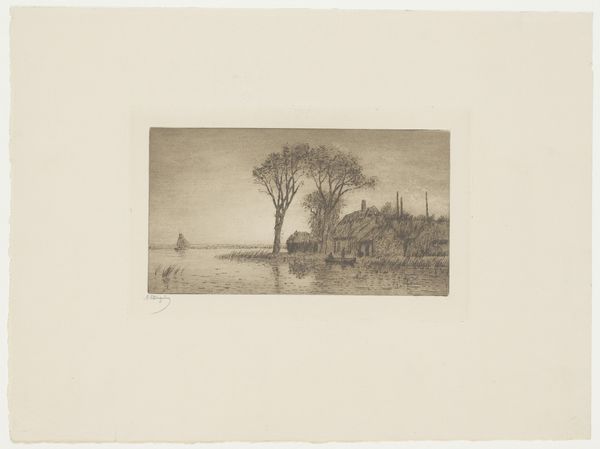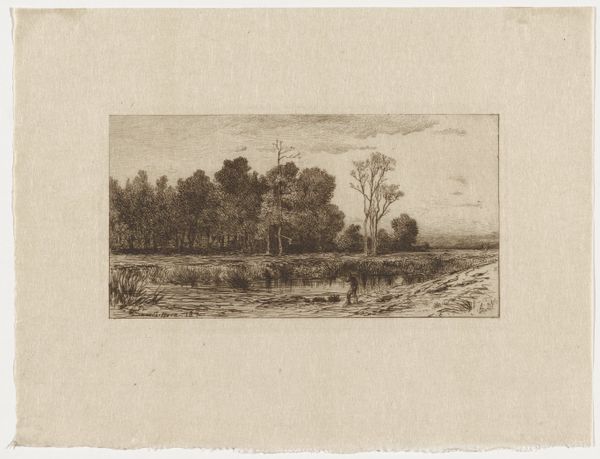
print, etching
# print
#
etching
#
landscape
#
etching
#
realism
Dimensions: height 464 mm, width 634 mm
Copyright: Rijks Museum: Open Domain
Curator: Here we have an etching by Alphonse Stengelin, dating from 1876 to 1910. The work is titled "Three Cows by a Pool with a Felled Tree Next to It". Editor: It's serene, isn’t it? The muted tones and delicate lines give it such a calm feeling, like stepping back into a simpler time. The image almost fades into the paper. Curator: Yes, it exemplifies the Realist movement's interest in everyday scenes. Consider how landscape became a subject worthy of artistic exploration in its own right during that period, divorced from religious or mythological narratives. Editor: And what of the felled tree? Does it suggest a comment on industrial progress encroaching on the pastoral? It is a rather somber note amidst the idyllic scene, a subtle nod toward something lost, disrupted. Curator: That’s a perceptive observation. Deforestation was, and remains, a major concern tied to land use and economics. Stengelin created this etching in an era when rural spaces faced immense pressure. His work underscores these conflicts. Editor: The cows are key here, too. They seem undisturbed, integrated seamlessly into the environment, perhaps symbolizing resilience in the face of change. I am thinking about modes of survival, rural economies, and animals as symbols of both labor and nature's bounty. Curator: Absolutely, agriculture underpins much of the socio-economic structures of this period, and indeed even now. It’s intriguing how Stengelin captures that interplay between humans, animals, and the land itself. Editor: Looking at it, I'm also struck by the contrast. There is a clear distinction between the cultivated bank where the fallen tree rests, and the wildness of the reedy pond. Curator: That contrast could represent the ongoing tension between our human need to tame and cultivate versus the inherent untamable power of nature. Thank you for that brilliant insight! Editor: And thank you! It is often when viewing such artworks we consider how our contemporary lives are deeply shaped by such landscapes and forces. Curator: It is a scene that reminds us to consider our own relationships with nature, both today and historically.
Comments
No comments
Be the first to comment and join the conversation on the ultimate creative platform.

